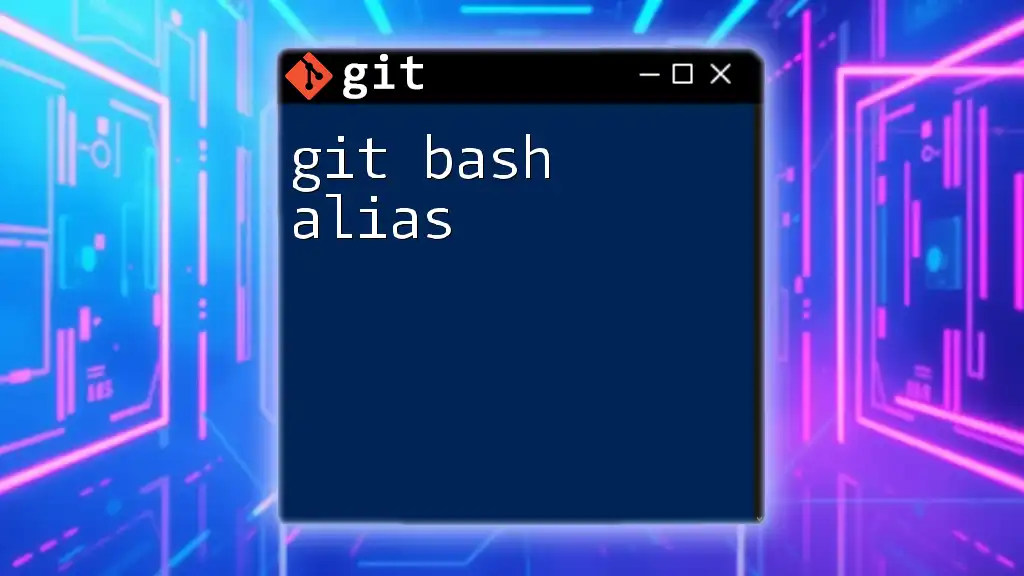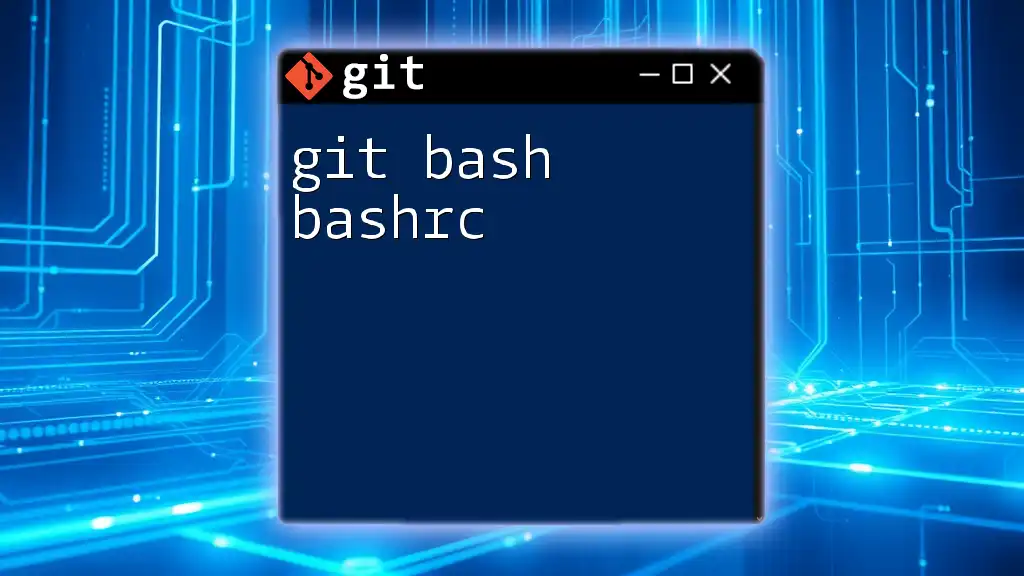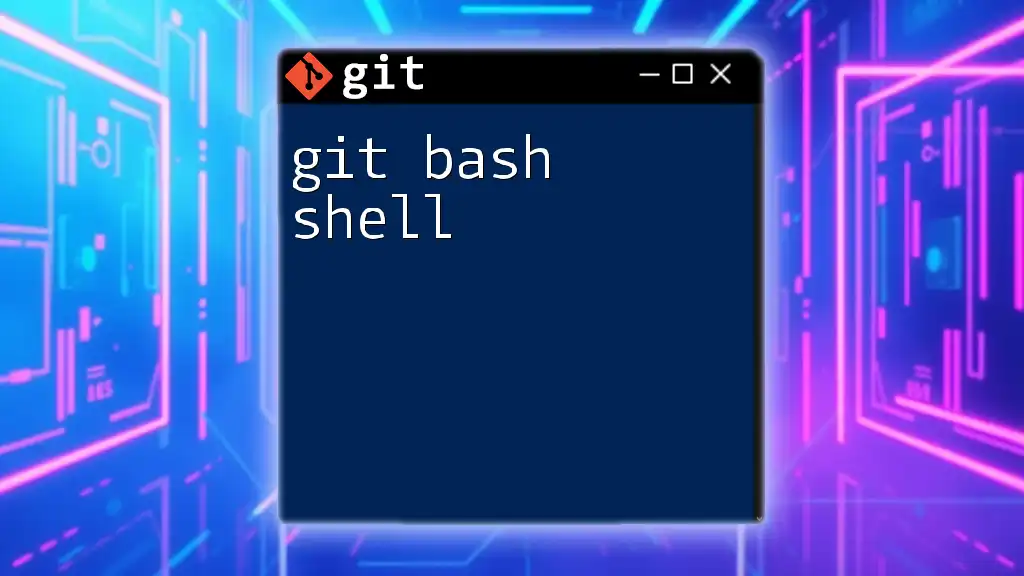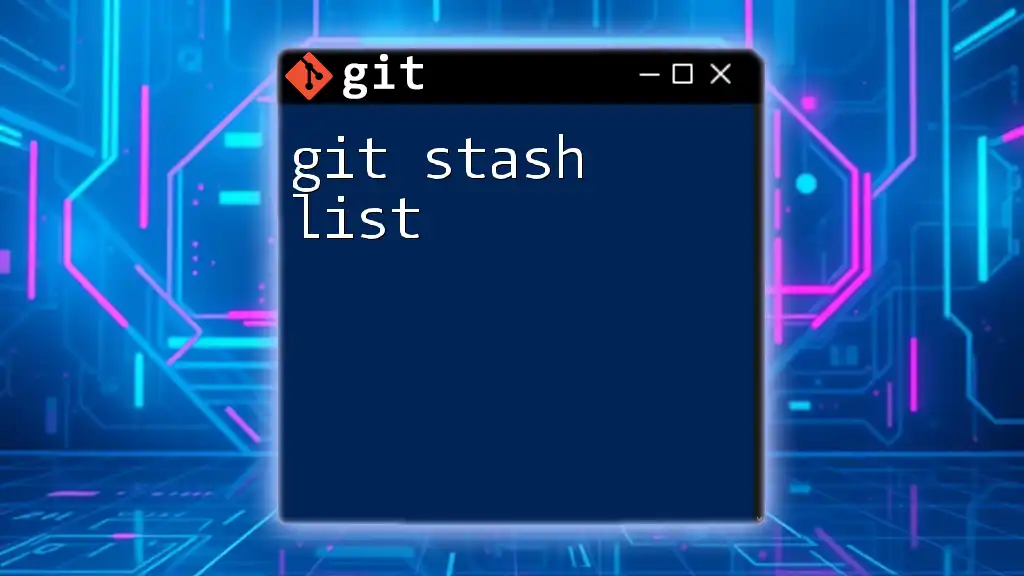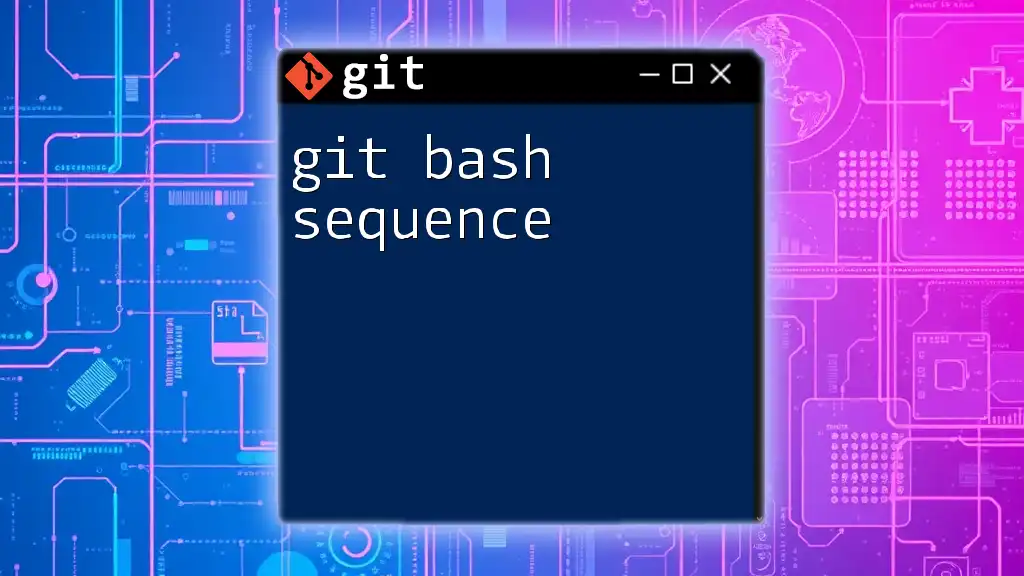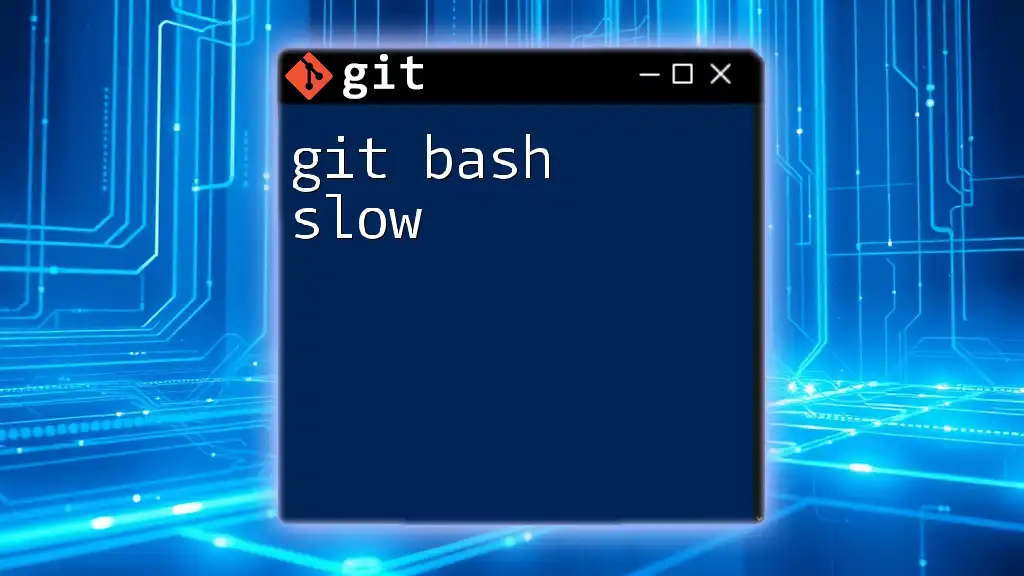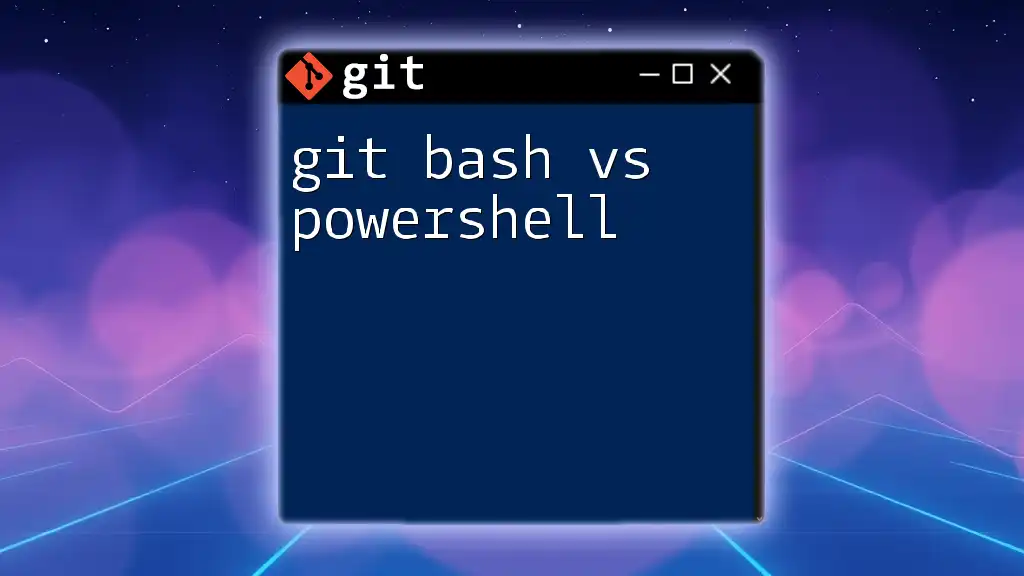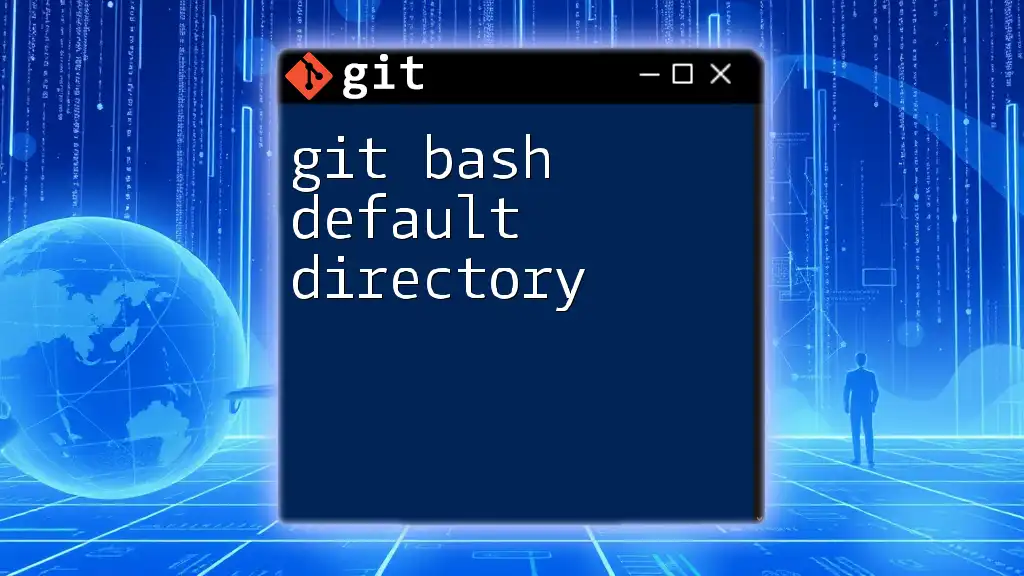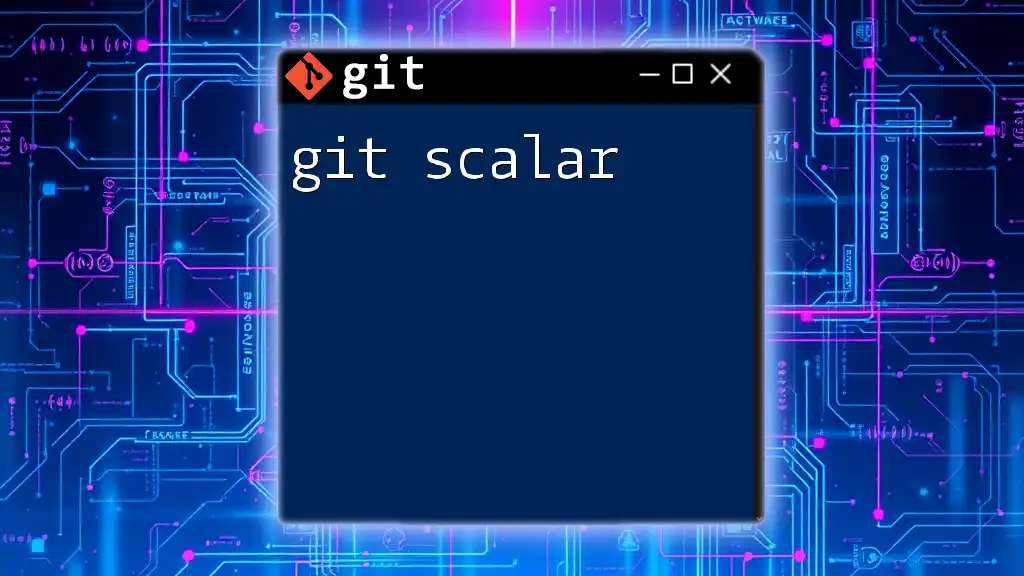Git bash aliases allow you to create shortcuts for longer git commands, streamlining your workflow by reducing the amount of typing required.
Here’s how to create an alias for the `git status` command:
git config --global alias.st status
Understanding Git Bash Aliases
What is a Git Bash Alias?
A git bash alias is a shorthand representation of a longer command in Git. By creating an alias, you can save time and reduce the chance of error when entering frequently used commands. Rather than typing out an entire Git command each time, you can simply use its alias, making your workflow smoother and more efficient.
Why Use Git Bash Aliases?
Utilizing aliases can significantly enhance your productivity. Here are some compelling reasons to incorporate git bash aliases into your workflow:
- Speeding Up Your Workflow: Instead of typing lengthy commands, you can create short aliases that serve the same purpose. This is particularly useful for repetitive tasks.
- Reduced Typing: Aliases help you reduce the amount of typing required. Simple shortcuts save time and energy, allowing you to focus on what truly matters.
- Customization: Git and its commands can be adapted to suit individual workflows. Aliases enable you to tailor your command line experience to your liking.
How to Create Git Bash Aliases
Setting Up Your .bash_profile or .bashrc File
The first step in creating a git bash alias is to set up your configuration file. Depending on your system, you will typically edit either the `.bash_profile` or `.bashrc` file.
To open and edit your configuration file, use a text editor of your choice. For example, if you're using `nano`, you would enter:
nano ~/.bashrc
Basic Syntax for Creating an Alias
The syntax for creating an alias in Bash is straightforward. The general format is:
alias name='command'
In this command, replace `name` with your desired shortcut (the alias)—and `command` with the actual command you want to use when you invoke this alias.
Example: Creating a Simple Alias
Let’s create a simple alias to check the status of your Git repository. You can use:
alias gs='git status'
By typing `gs` in your terminal, you execute `git status` without having to type the entire command every time. This simple change saves time and streamlines your workflow.
Commonly Used Git Aliases
General Git Aliases
There are several essential aliases that can greatly enhance your Git experience. Here are a few that everybody should consider:
- `gco` for checkout:
alias gco='git checkout'
Using `gco` allows you to quickly switch branches without typing out the entire command, speeding up branch navigation.
- `gcm` for commit:
alias gcm='git commit -m'
This alias lets you input a commit message right after `gcm`, which can significantly speed up the committing process.
Advanced Git Aliases
You can also create more complex aliases for common tasks that involve additional flags or options. For example, you might want to visualize your commit history in a more informative format:
alias glog='git log --oneline --graph --decorate --all'
This command generates a concise graphical representation of your commit history, making it easier to understand your project’s development progress at a glance.
Viewing and Managing Your Git Aliases
Listing Your Aliases
To see which aliases you have currently set up, simply type the following command in your terminal:
alias
This will list all the aliases you’ve created, allowing you to double-check what shortcuts you have available.
Modifying Existing Aliases
If you need to update any existing alias, you can simply redefine it in your configuration file. For instance, to change the commit alias to include a default commit message, you would write:
alias gcm='git commit -m "Updated commit message"'
This flexibility allows you to refine your workflow as your projects evolve.
Removing Aliases
If you decide that a particular alias is no longer useful, you can remove it using the `unalias` command:
unalias gcm
This command will delete the specified alias, keeping your workspace uncluttered.
Persisting Your Aliases
Making Sure Aliases Stick
To ensure that your aliases are available across terminal sessions, you need to make sure they are loaded each time you open Bash. After editing your configuration file, run the following command:
source ~/.bashrc
This action refreshes the current terminal session, allowing the newly added aliases to take effect immediately.
Troubleshooting Common Alias Issues
There may be times when setting an alias doesn’t work as expected. Here are a few common problems to watch for:
- Syntax Errors: Ensure that your alias syntax follows the correct format, as errors can lead to alias failure.
- Conflicts with Existing Commands: Be careful while naming aliases to prevent conflicts with existing commands (e.g., using `gc` could conflict with `git commit`).
- Not Loading Your Configuration: If your aliases aren’t recognized, ensure that you’ve sourced your `.bashrc` or `.bash_profile` file correctly.
Conclusion
Incorporating git bash aliases into your routine can lead to a more efficient and customized development experience. By utilizing aliases, you can significantly decrease repetitive typing, reduce errors, and tailor your workflows according to your specific needs. Take the time to explore and create aliases that enhance your productivity, and watch how it transforms your work with Git.
Additional Resources
For further reading and exploration of Git commands and functionalities, consider delving into the official Git documentation or online tutorials tailored to beginners and advanced users alike. Whether you're just starting out or looking to refine your skills, a wealth of knowledge is available to help you get the most out of Git.

